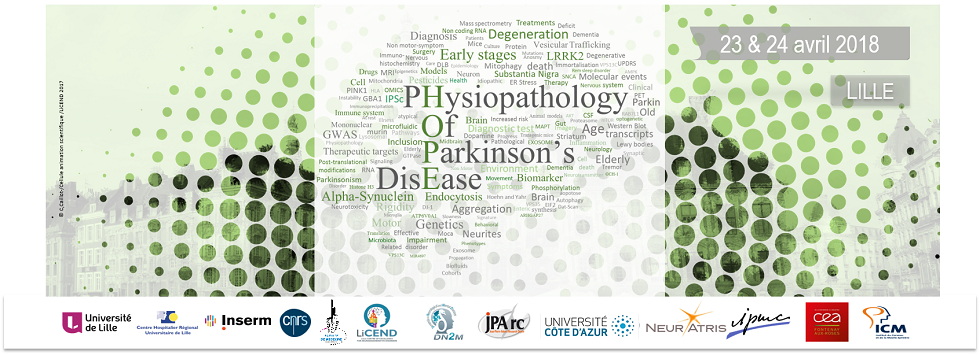Parkinson disease (PD) affects 1% of the population above 65 years. It is characterized by the triad of symptoms: tremor, rigidity, and bradykinesia. To date, more than 10 validated genes have been identified, associated with either autosomal dominant (AD) or recessive (AR) forms of PD. However, the identified genes associated with early-onset (EO, >40 years) AR PD only explain 45%, other genes remain to be discovered. The aim of the work is to identify new genes involved in AR EO PD, using consanguineous PD families and applying genotyping on DNA microarrays and NGS technologies.
Using a series of 99 families with confirmed consanguinity, we identified two families with a mutation in the same gene PSMF1. Interestingly the protein coded by this gene is able to interact with FBXO7 that is mutated in Parkinson disease via a specific domain. One of the mutation touch an amino acid very conserved among species and also conserved in FBXO7 family, expressing a very important role of this amino acid for the function of the protein. We also identified a nuclear family with 2 unaffected related parents and 3 affected members in which we performed both linkage analysis and exome sequencing. Linkage analysis identified a single region of linkage (LODscore = 2.4) on chromosome 18. After variant filtering step, through exome sequencing keeping only those heterozygous in both parents and homozygous in the 3 affected children, it remained only 1 variant located in the linkage region. This missense mutation in EPG5 (c.5307C>A; p.Phe1769Leu) was predicted to affect the mRNA splicing that was further validated using patient fibroblast. RT-PCR and western blot showed a deletion of 55 nucleotides leading to a premature frameshift and a strong decrease of EPG5 expression in the patient fibroblast. Moreover, this gene is mutated in autosomal recessive form of Vici syndrome, a rare and severe infantile syndrome. Interestingly, some related of vici syndrome patients developed a Parkinson disease. So decrease of EPG5 level can be a risk factor to developed Parkinson disease.
Conclusion We identified two strong candidate genes for AR-PD: PSMF1 and EPG5. Further functional data are needed to strengthen the role of these genes in PD, possibly affecting the proteasome, autophagy and α-synucleine aggregation.

 PDF version
PDF version
